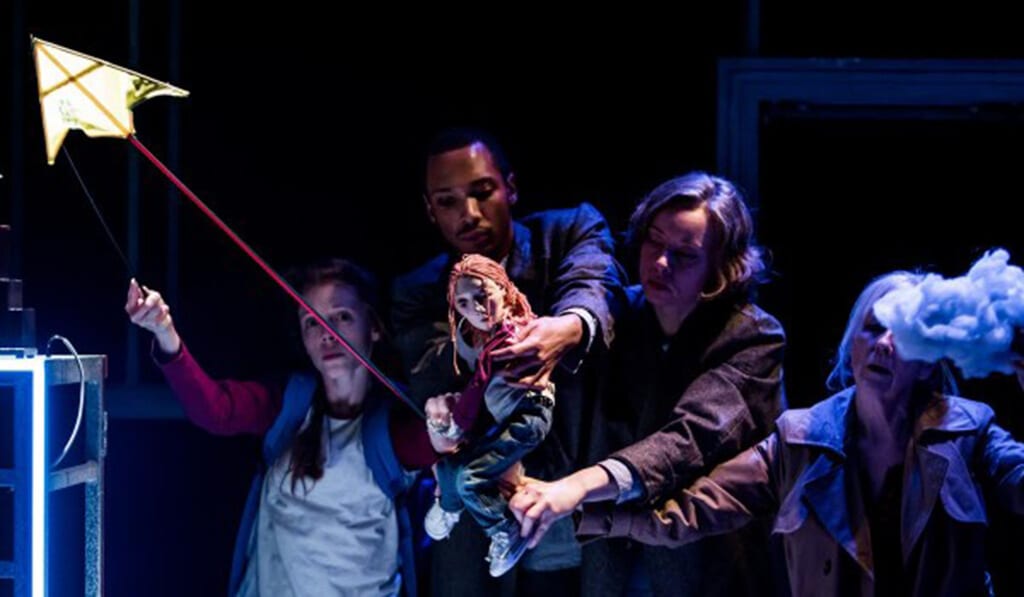Kite encapsulates the story of a young girl (Charlotte Croft) who has recently lost her mother, forcing her to leave her home and move in with equally grieved grandma (Liz Crowther). Both struggle to adapt and find themselves increasingly distanced from each other. Among the last of her mother’s possessions, the girl finds a kite, which in a fit of anger and exasperation grandma throws away. The kite and the wind unite to guide girl and grandma on separate wild adventures allowing them to come to terms with their loss and realise their need for one another.
For those who have never experienced a ‘Wrong Crowd’ production before (myself included), it is natural to question how they could manage to employ mime, dance and puppetry in this simple yet striking tale. The answer: effortlessly. This highly skilled cast uses an array of techniques to create constant visual delight, add to this the backdrop of original music and the outcome is magical.
The intricate set is continually rearranged by a gust of wind, or as they are better known, Nicola Blackwell and Linden Walcott-Burton. The physicalized wind adds to the magic and highlights the quality of the piece as a whole. The audience becomes so acclimatised to the high standard of Blackwell and Walcott-Burton that we forget we’re not witnessing the actual element. They flawlessly transport girl, grandma and audience from a seaside town down into the underground and through the bustling streets of London. With the help of a clever set, they are able to transform the comforting domestic atmosphere into a threatening maze in an instant.
Croft and Crowther are equally impressive and compliment each other throughout the piece. A standout example is the repeated dinner sequence, although simple, it is so telling of the pain they’re experiencing and their difficulty to adjust. While the girl clings on to her mother’s memory, grandma suppresses it, so much so that she throws the picture of her daughter in the bin. The wind helps the little girl let go of her pain and the grandma to accept hers, depicted through the loss and finding of the mother/daughter’s possessions. Crowther’s skilful use of mime successfully highlights the impact of losing a child; this is an incredibly moving sequence, even drawing an emotional reaction from the observing wind.
Croft is just as incredible; her effortless transitions between both aspects of the character – bereaved daughter and giggling girl playing with her kite – are totally believable and entrancing.
The use of puppetry is highly effective and well calculated, often creating moments of comedy. The brave directorial decision for the actors to be visible when controlling the puppets, for me, totally pays off. But regardless, by then the audience is so involved and immersed in the piece that we are prepared to suspend our disbelief for anything – the magic cannot be lost.
I think the beauty of this piece lies in its apparent simplicity, the effortless transitions and the compelling music that gently whisks the narrative along. The only disappointment was that the story and magic had to come to an end.

